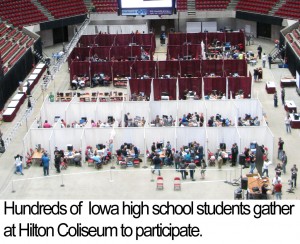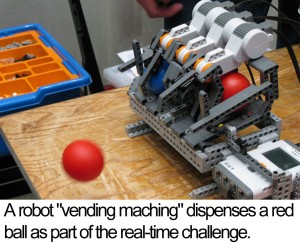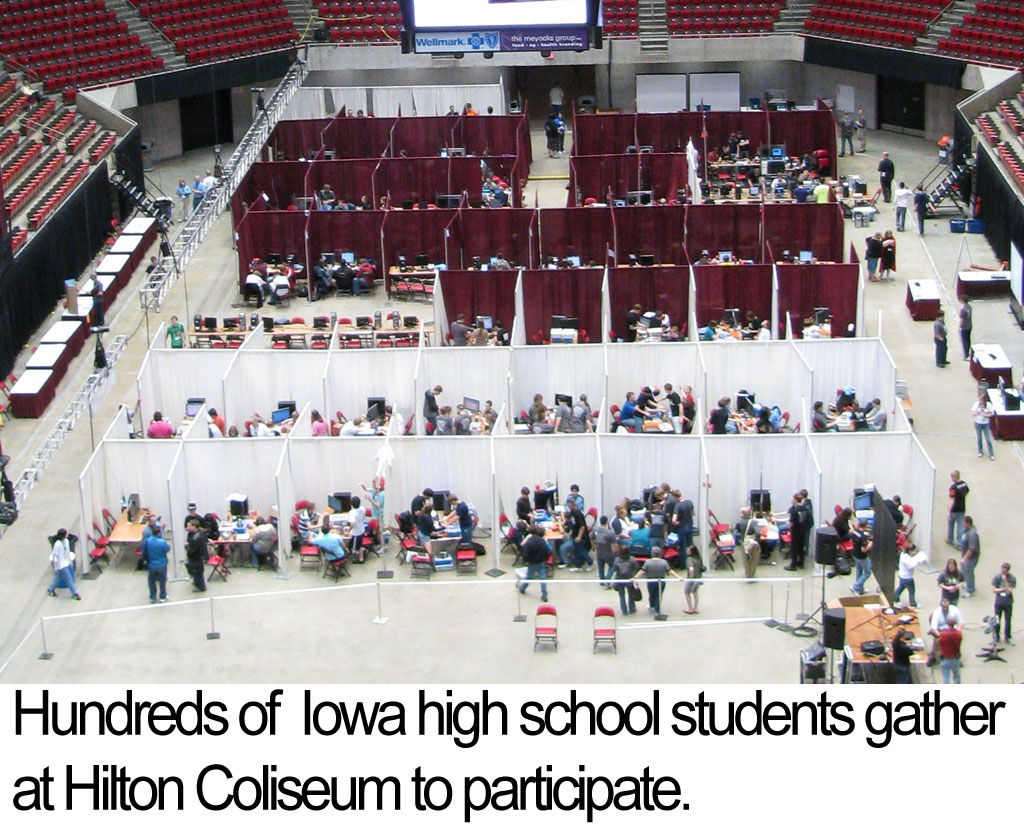Iowa high school students traveled from all across the state to participate in the 2011 IT Olympics. Over 300 students spent two days in Hilton Coliseum on Friday, April 29, and Saturday, April 30.
 The IT-Olympics have been held at Iowa State University for the past four years to showcase skills high school students learn during the school year through the IT-Adventures program and their involvement in their high schools’ IT clubs. IT-Adventures was created as one response the state of Iowa has to cultivate an early interest in IT and address the ever-growing need to increase cyber security.
The IT-Olympics have been held at Iowa State University for the past four years to showcase skills high school students learn during the school year through the IT-Adventures program and their involvement in their high schools’ IT clubs. IT-Adventures was created as one response the state of Iowa has to cultivate an early interest in IT and address the ever-growing need to increase cyber security.
“It is important that universities produce more students who can enter the IT workforce,” said Doug Jacobson, IT-Adventures founder and electrical and computer engineering professor. “These future IT workers will be responsible for securing the national cyber space and for providing the technical expertise that has enabled the country and the world to prosper.”
The 38 IT clubs that participated were scored on three bases: primary challenge, real-time challenge, and community service. Participants were grouped into teams of three or more to compete in three major areas: cyber security, robotics, and game design.
There were a total of 429 students and support staff that made up 25 cyber teams, 18 game design teams, and 36 robotics teams. “We have several teams who have been with us since the beginning and about 10 kids who have been with us all four years,” Jacobson said. The event saw an increase in females, homeschool students, and 4-H Club members participating this year.
The community service projects the teams completed were based on the knowledge they learned through their high school IT clubs. After giving a presentation about their work to a line of judges, the top three teams were Johnston High School with first place, East Union High School in Afton with second place, and Osage High School with third place.
Johnston’s club taught third- and fourth-grade students how to make racecars out of LEGOs. The elementary students learned about gear ratios and the relationship between distance, rate, and time. East Union raised awareness about recycling and proper disposal of electronics through an electronics drive. Osage held a seminar that taught all ages how to utilize Facebook and use privacy settings. All three teams received trophies.
The remainder of the two-day competition was spent presenting primary challenges and participating in real-time challenges.
Cyber security groups received a corporate scenario and put together a network complete with setup services such as web, email, and domain name. For the real-time challenge, groups defended their networks against graduate students and IT professionals who were trying to hack into the networks by any means necessary.
“Teams were exceptionally well prepared, which made the job of attacking them to assess their security more difficult than usual,” stated Benjamin Blakely, co-director of the “Red Team,” which consisted of Iowa State graduate students and IT professionals. “It’s good to see students of this age taking the threats of cyber security seriously; we’ll need every bit of their expertise in the years to come.”
 Robotics groups came to the competition with robots they built using LEGO Mindstorms NXT. The robots were judged in areas of design, code, and documentation for the primary competition. Teams were also given robotics challenges to solve during the real-time competition. For one challenge, students were asked create a card-operated vending machine that dispensed multiple items at separate price points. The machines were judged on multiple criteria, such as how well they took commands from the user and the ability to handle multiple orders.
Robotics groups came to the competition with robots they built using LEGO Mindstorms NXT. The robots were judged in areas of design, code, and documentation for the primary competition. Teams were also given robotics challenges to solve during the real-time competition. For one challenge, students were asked create a card-operated vending machine that dispensed multiple items at separate price points. The machines were judged on multiple criteria, such as how well they took commands from the user and the ability to handle multiple orders.
Game design teams created an educational game targeted at middle school students using Alice software. During the real-time competition, students completed games on given base programs. These games were made available to play after they were judged.
The scores of the community service presentation were added to the primary and real-time competitions. The top three groups from each area were selected as winners.“The event was a success,” said Jacobson. “All teams seemed to enjoy the competition.”
To view more photos taken by students, visit our Flickr page.
